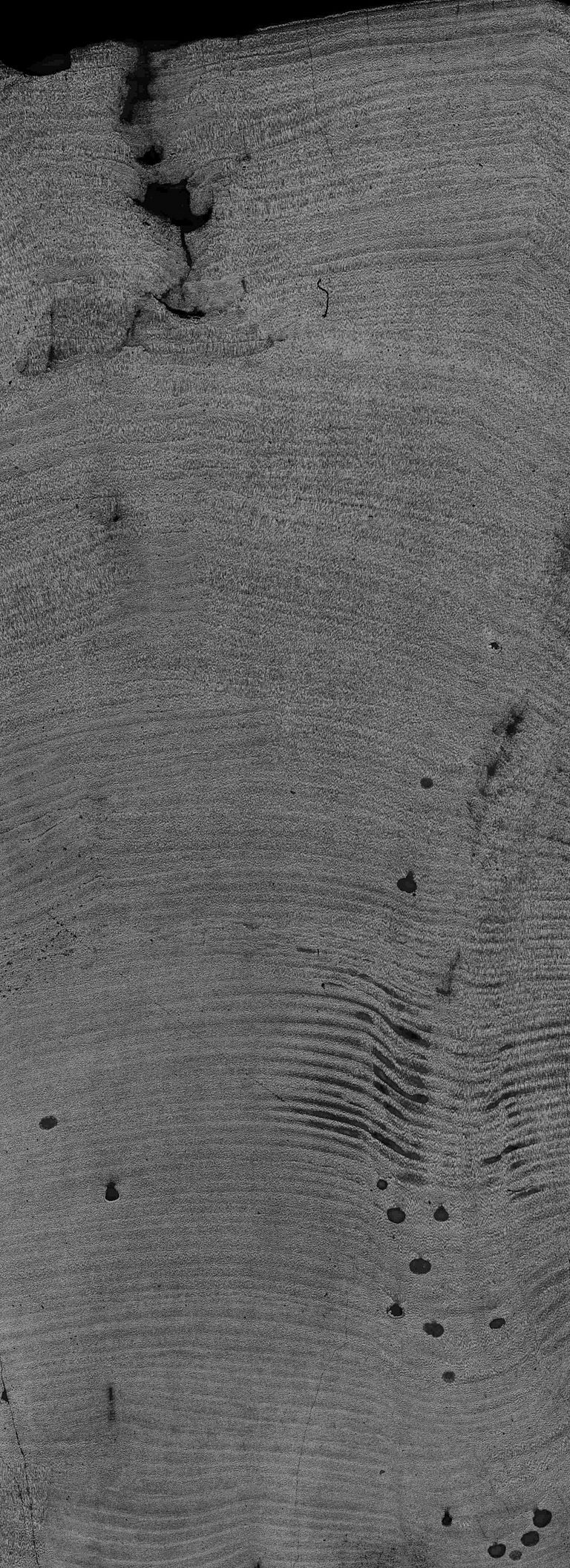Reconstruction of 650 years of Arctic ice cover
Researchers from Germany, the USA and Canada use red algae as climate archives
The algae used by the authors for their environmental reconstruction is Clathromorphum compactum. It lives in shallow waters on the sea floor to form solid calcium carbonate structures, resulting in fine year bands, similar to trees on land. The growth of algae is strongly influenced by the amount of light that reaches the sea floor. And that in turn depends very closely on the duration of the annual ice cover at sea. This correlation allowed the research team, headed by lead author Dr. Jochen Halfar of the University of Toronto, to write a 650-year-long, accurate history of the Arctic ice. "During the Little Ice Age, from the beginning of the 15th to the 19th century, the seasonal period during which the sea was covered by ice, was very extensive for several hundred years" said co-author Dr. Andreas Kronz from the University of Göttingen. "Since the end of the Little Ice Age around 1850, the archives of the red algae show a continuous decrease of the ice, a trend which continues through today. This decrease is stronger than anything we previously observed in the 650 year long history of the red algae record."
According to co-author Dr. Steffen Hetzinger from GEOMAR, who has been researching calcifying red algae as climate archives for several years, the temporal length of the reconstruction period is particularly remarkable. "650 years of reconstructed ice records with year-to-year accuracy is rather special. In marine sciences, we hardly ever reach such a large temporal extent with consistent resolution with any of our other natural archives," says the paleo- oceanographer.
Original publication:
Halfar, J., W. H. Adey, A. Kronz, S. Hetzinger, E. Edinger, W. W. Fitzhugh (2013): Arctic sea-ice decline archived by multicentury annual-resolution crustose coralline algal proxy. Proceedings of the National Academy of Sciences of the USA (PNAS), http://dx.doi.org/10.1073/pnas.1313775110
![[Translate to English:] Ein Taucher nähert sich dicken Krusten der Rotalge Clathromorphum. Diese Algenart ist in Küstengebieten des Nordatlantiks, des Nordpazifiks und des Arktischen Ozeans zu finden. Sie kann mehrere hundert Jahre alt werden. Foto: Nic A diver approaches the thick crusts of the red alga Clathromorphum. This type of algae is found in coastal areas of the North Atlantic, the North Pacific and the Arctic Ocean. They can be several hundred years old. Photo: Nick Caloyianus](/fileadmin/_processed_/2/8/csm_2010-15-07_red-alga-Clathromorphum_Photo-Nick-Caloyianus_6a6a41441d.jpg)



